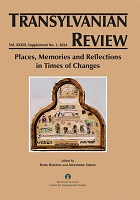Representation Structures of Aromanian Communities at the Beginning of the 20th Century: Communities and Ephorates
Representation Structures of Aromanian Communities at the Beginning of the 20th Century: Communities and Ephorates
Author(s): Emanuil IneoanSubject(s): Cultural history, Museology & Heritage Studies, Political history, Social history, Politics and Identity
Published by: Academia Română – Centrul de Studii Transilvane
Keywords: Aromanians; Balkans; Greece; communities; identity survival;
Summary/Abstract: At the beginning of the 20th century, Aromanians from the Balkans began to organize themselves in a series of associations with a schooling and church-related role called “Romanian communities.” They were led by a council called an ephorate, a structure very common in the Ottoman era. Through this mechanism of the ephorates, the recognized Christian millets (only Greek at first, then Bulgarian, etc.) were allowed a form of autonomous organization through which they could preserve their socio-cultural interests. In the summer of 1904, there were already 56 such communities south of the Danube, inspired by the model of the one in Thessaloniki. These were later recognized by the Ottoman state, these “Romanian communities in Turkey” thus receiving a legal basis. It must be stated that these were spontaneous organizations, which appeared without the interference of interested state actors in the area. Their self-identification as “Romanian communities” is relevant to their ethnic self-perception. This study aims to analyses the way in which these associative bodies were formed, their leaders and community role, which had a major impact in the cultural-identity dynamism of the Aromanians.
Journal: Transylvanian Review
- Issue Year: XXXIII/2024
- Issue No: Suppl. 1
- Page Range: 27-38
- Page Count: 12
- Language: English

